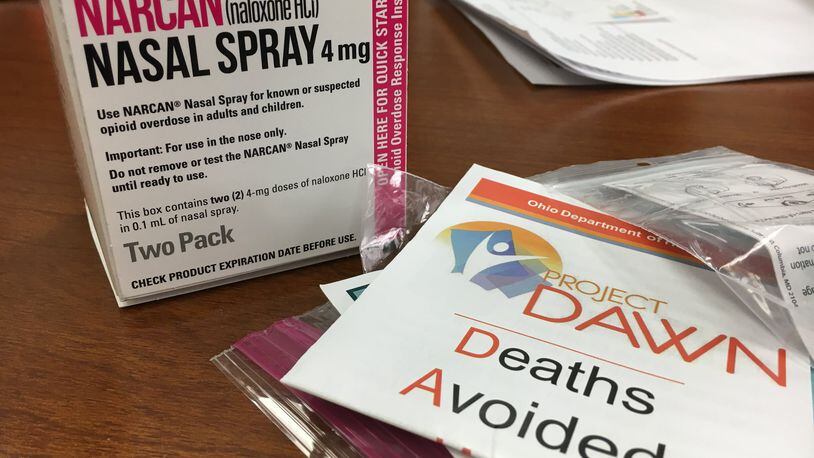A summary of the ideas generated during those sessions was shared Monday with state leaders representing many agencies that have direct impact on pieces of the opioid crisis — including the directors of the Bureau of Worker’s Compensation, Ohio Department of Mental Health and Addiction Services, the Ohio Department of Rehabilitation and Correction, representatives from the state medical and pharmacy boards and the Deputy Director of the Governor’s Cabinet Opiate Action Team.
“Our collective responsibility is to talk about what can we do to help address some of the issues that you bring forth,” said Tracy Plouck, director of OMHAS. Her organization works directly with the governor’s action team and will develop action steps based on the information gathered by Your Voice Ohio, Plouck said.
RELATED: Local residents weigh in on drug crisis
Doug Oplinger, director of Your Voice Ohio, said those living through the crisis should be involved in finding solutions. “In every community we visited there was a feeling of desperation among those struggling with recovery, and in their families a feeling of guilt or helplessness,” Oplinger said. “People were saying they’re falling through the cracks.”
One of the biggest revelations from the community forums and passed on to state leaders was the uneven availability of various solutions from county to county and even city to city.
While there is evidence that efforts like drug courts, needle exchanges, rapid response teams, comprehensive drug education in schools and coordination between jails and treatment providers have worked to improve outcomes for those with substance abuse disorders, those solutions are embraced only sporadically.
“(We) saw differences in death rates between two similar counties where one had medically assisted treatment through drug court and the other did not,” Oplinger said. “We detected tension in some communities.”
In some counties there has been an understanding of addiction as a disease, while in others, addicts are still seen as and treated as criminals, Oplinger said.
RELATED: Drug crisis in Ohio: What solutions are making a difference?
“The culture is not just local,” said Gary Mohr, the state’s corrections director. He noted numerous measures that have been suggested to keep drug addicts out of prisons and get them into treatment instead, each of which has been met with resistance from prosecutors, judges, and county commissions.
Mohr highlighted Senate Bill 66, which would allow judges more discretion in sealing drug records and diverting people to treatment.
Recovering from opioid addiction: ‘I had to get help or I was going to die’
Responding to a lack of participation in the community forums by medical professionals, State Medical Board President Robert Giacalone said that was a “shame” and that the board is actively working to educate doctors about their role preventing addiction.
“Quite honestly I’m blown away by some of the information you have,” he said of the Your Voice Ohio report.
Other leaders at the meeting recognized that there is a disconnect between what the state is doing to attack the drug epidemic and the public’s perception of what’s being done — reflected in many of the responses from the forums in which people said the government and media don’t care about them.
HOW TO GET HELP: An opioid addiction resource guide
Dr. Mark Hurst, medical director at OMHAS, called stigma the most destructive force in this crisis, resulting in treatment services that are available but aren’t getting tapped.
“There are a few things in (The Your Voice Ohio presentation) that really impacted me, and I think impacted a lot of us,” he said.
Your Voice Ohio is a collaboration of news organizations around the state, including the Dayton Daily News, Springfield News-Sun and the (Butler County) Journal-News. The group’s purpose is to bring the collective power of the organizations to foster positive change in the state.
About the Author
